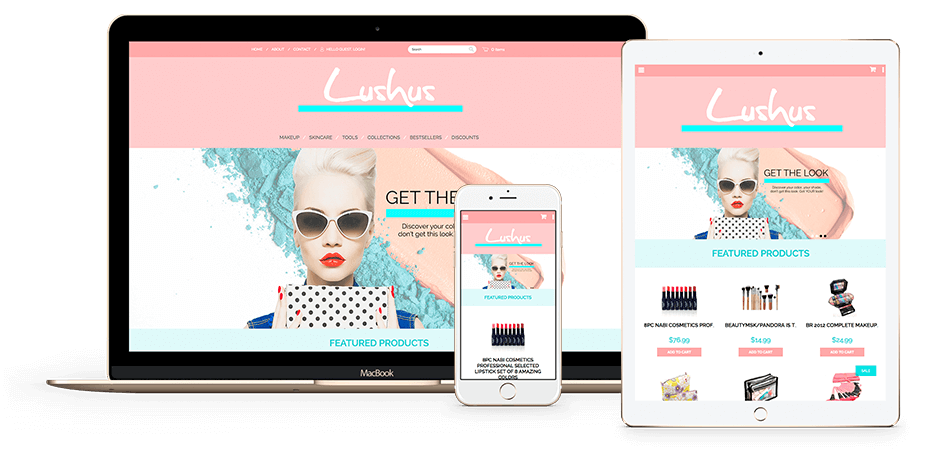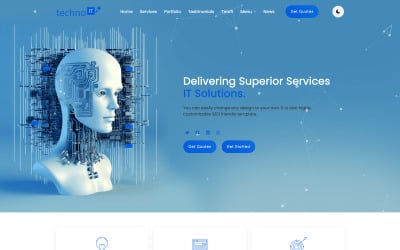Modern Internet Site Layout That Records Attention and Converts
In a significantly digital landscape, modern-day website layout has become an essential variable in recording individual attention and driving conversions. By purposefully employing aesthetic hierarchy, responsive formats, and involving interactive elements, designers can develop experiences that not only bring in visitors yet additionally promote significant interactions. In addition, efficient call-to-action techniques play a crucial duty in guiding users towards wanted outcomes. As we check out these vital elements, it ends up being clear that understanding their interplay can significantly impact a website's performance and individual satisfaction. What are the crucial elements that truly make a difference?
Value of Visual Pecking Order
Visual power structure is a vital aspect in site layout, as it guides users' interest and enhances their overall experience. By tactically arranging content, designers can direct individuals to the most important info initially, thus increasing interaction and boosting usability.
Integrating a rational flow in material setup is important; as an example, putting one of the most critical info on top of a page promotes instant acknowledgment. Regular use of typography, such as differing font dimensions and styles, helps develop a clear content structure. This organization not only help in navigating but likewise develops depend on, as individuals really feel much more comfortable when they can quickly locate what they are seeking.
Ultimately, a well-executed visual pecking order not only improves visual charm however likewise considerably influences customer actions. By focusing on important aspects and making certain a smooth experience, developers can successfully convert visitors into customers, reinforcing the importance of this foundational style principle in modern site advancement.
Responsive Layout for All Devices
Creating a seamless experience throughout various devices is important in today's digital landscape, where users accessibility websites from smartphones, desktop computers, and tablets alike. Receptive design is a crucial strategy that ensures websites adjust fluidly to different display dimensions, alignments, and resolutions. By using adaptable grids, images, and CSS media questions, designers can produce designs that keep visual honesty and performance, despite the tool being used.
The relevance of receptive layout prolongs past aesthetics; it straight influences individual engagement and conversion prices. A website that works well on all gadgets encourages longer sees and reduces bounce rates, as customers are extra likely to engage with web content that is easy to browse. Search engines, particularly Google, focus on mobile-friendly websites in their positions, making responsive design an important part of search engine optimization (SEO)
Integrating receptive design not just improves customer experience but additionally streamlines the advancement process. By developing a single site that works across tools, organizations can conserve time and resources contrasted to developing separate mobile and desktop computer versions. Ultimately, receptive design is a basic approach for contemporary internet site layout, making certain availability and satisfaction for all customers, no matter of their gadget.
Engaging Interactive Elements
While a receptive style lays the foundation for a functional site, integrating engaging interactive elements is vital for catching user focus and fostering deeper links. Website Design. Interactive elements, such as animations, quizzes, and clickable infographics, develop a more dynamic customer experience, urging visitors to invest more time on the website
Integrating interactive attributes can additionally direct users via complex information, making it simpler to absorb web content. Interactive sliders can illustrate item variations, while ingrained videos can provide presentations or testimonials that reverberate even more than static pictures or message. Gamification techniques, like rewards for completing jobs or involving with material, can enhance user inspiration and retention.
Effective use interactive components not only enriches the user Look At This experience however can likewise result in greater conversion rates. By making communications interesting and satisfying, organizations can grow a feeling of commitment and trust with their audience. It is important to stabilize interactivity with performance; overly complicated functions might hinder website rate, adversely impacting individual contentment. Eventually, integrating properly designed interactive components can dramatically elevate an internet site's effectiveness, driving involvement and conversions in today's affordable electronic landscape.
Structured Navigating Practices
Effective navigation is a keystone of any type of effective internet site, as it straight influences user experience and web content ease of access. Streamlined navigation practices make sure that users can easily locate details, improving their interaction with the site. A well-structured navigating menu must be simple and instinctive, typically featuring a minimal variety of main categories to stay clear of frustrating site visitors.
To achieve streamlined navigation, designers need to focus on a hierarchical framework that realistically arranges content. Applying breadcrumb tracks can give users with context about their Go Here existing location within the site, permitting smooth backtracking. Additionally, utilizing drop-down food selections can successfully conserve space while still offering accessibility to subcategories.
Responsive design is important, as navigating must be functional throughout all devices (Website Design). Mobile individuals, specifically, gain from touch-friendly food selections and collapsible areas that preserve functionality without jeopardizing looks

Reliable Call-to-Action Strategies
A well-crafted call-to-action (CTA) is crucial for directing customers toward wanted results on a website, as it motivates them to involve with content or make an acquisition. To maximize their effectiveness, CTAs must be clear, engaging, and tactically positioned throughout the site.
First, make use of action-oriented language that communicates seriousness or worth, such as "Get Begun," "Join Now," or "Case Your Discount." This language not only inspires customers but likewise sets clear assumptions regarding the following steps.
2nd, take into consideration layout aspects; CTAs should attract attention aesthetically with contrasting colors, ample whitespace, and noticeable positioning. A button that is easy to see and click boosts the probability of customer interaction.
In addition, individualizing CTAs based on customer habits or demographics can considerably boost engagement. Customized messages resonate much more with individuals, driving greater conversion rates.

Verdict
To conclude, contemporary web site layout stresses the integration of visual pecking order, responsive designs, involving interactive aspects, streamlined navigation, and reliable call-to-action approaches. These elements jointly improve user experience, ensuring that site visitors remain involved and inspired to discover material better. By prioritizing these design concepts, services can substantially boost individual retention and conversion rates, ultimately resulting in better success in the electronic landscape. The constant advancement of internet layout highlights its essential role in reliable on-line communication and advertising and marketing.
In an increasingly electronic landscape, modern site style has arised as image source a pivotal factor in recording individual attention and driving conversions.Aesthetic power structure is an important aspect in website style, as it guides individuals' focus and improves their overall experience.The importance of receptive style expands past looks; it directly impacts customer engagement and conversion prices.Incorporating responsive layout not only boosts individual experience however also simplifies the growth process. Eventually, receptive layout is an essential technique for modern-day internet site design, ensuring access and fulfillment for all customers, regardless of their gadget.